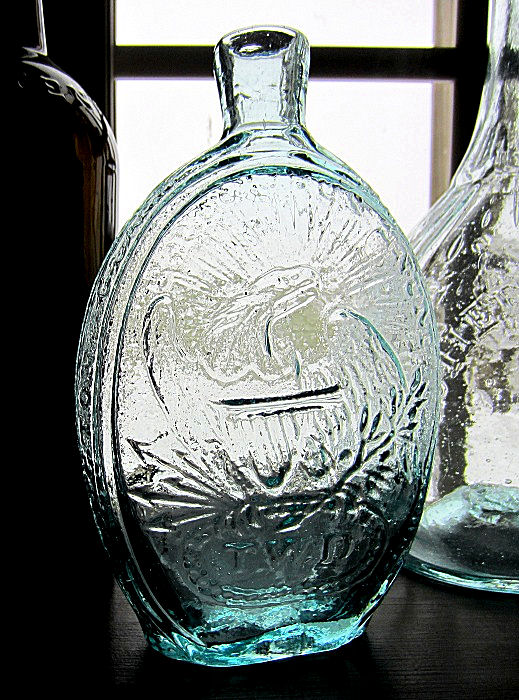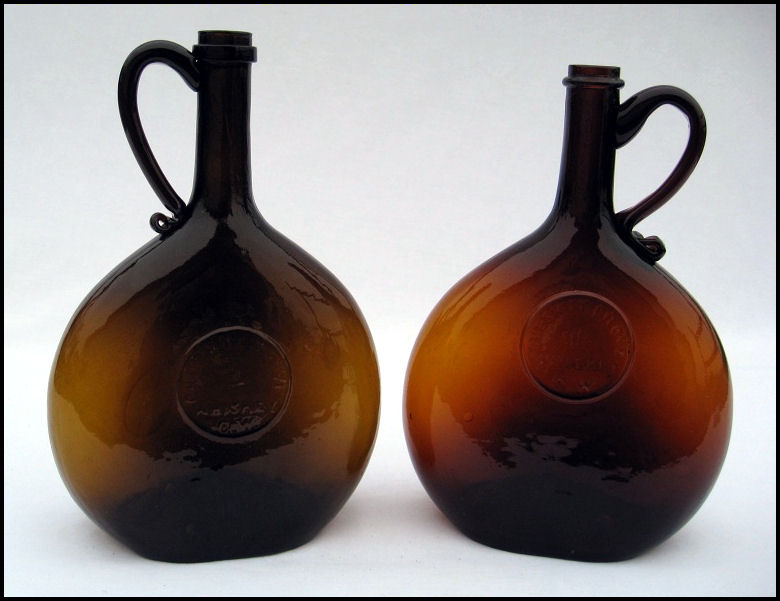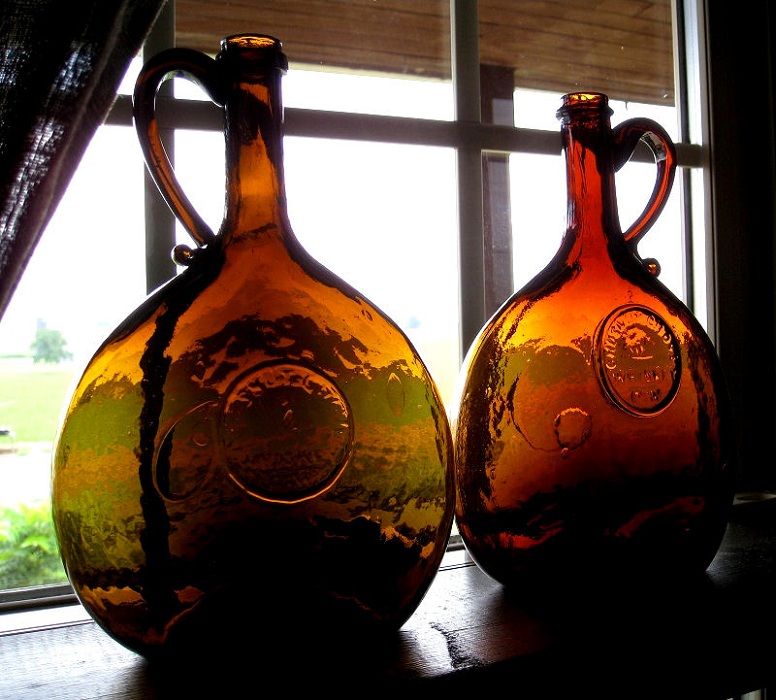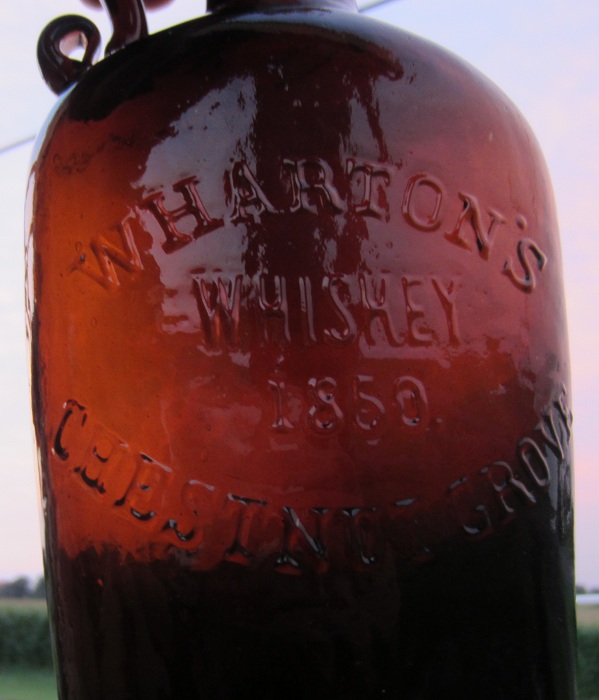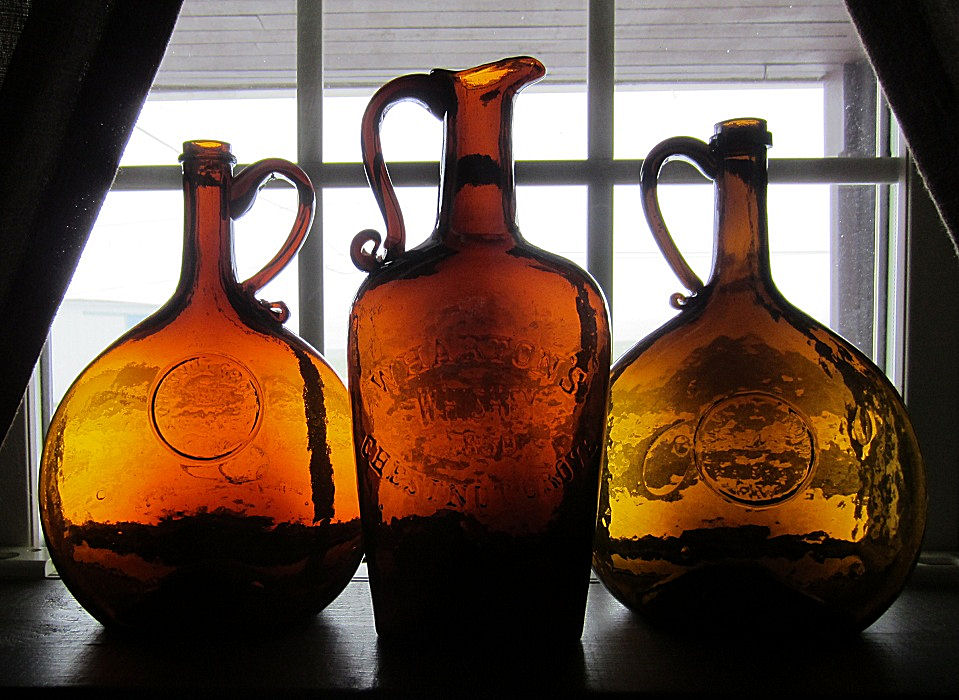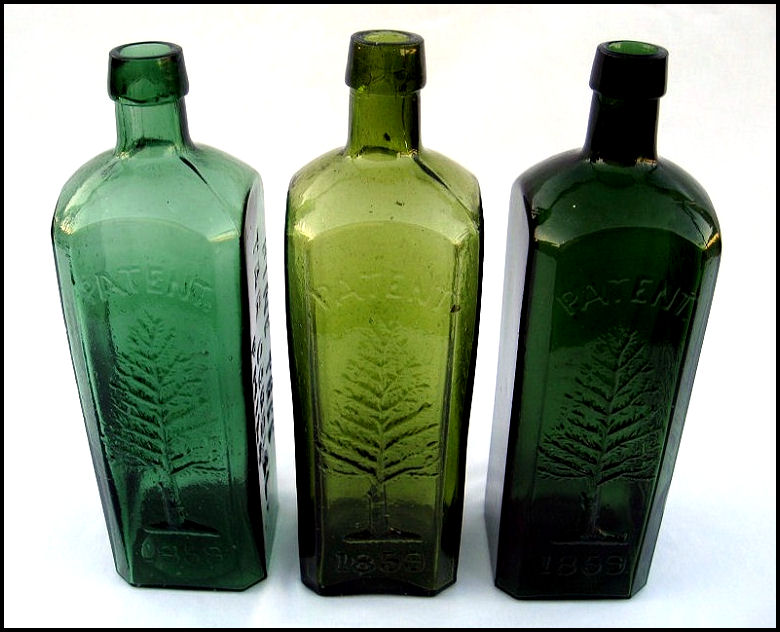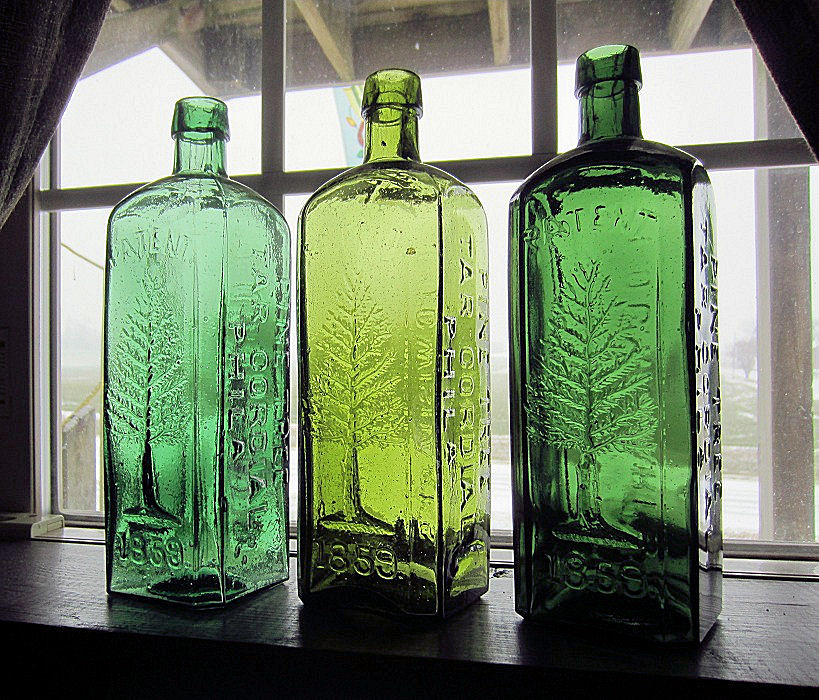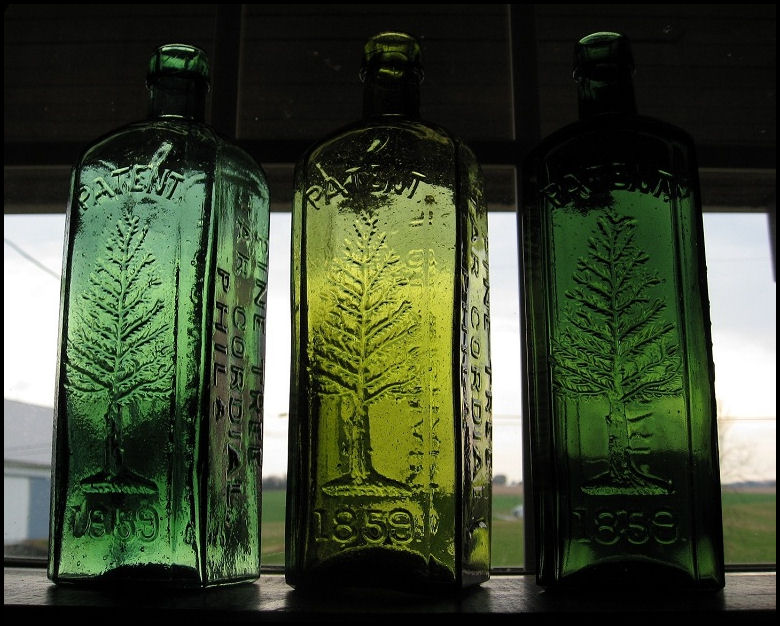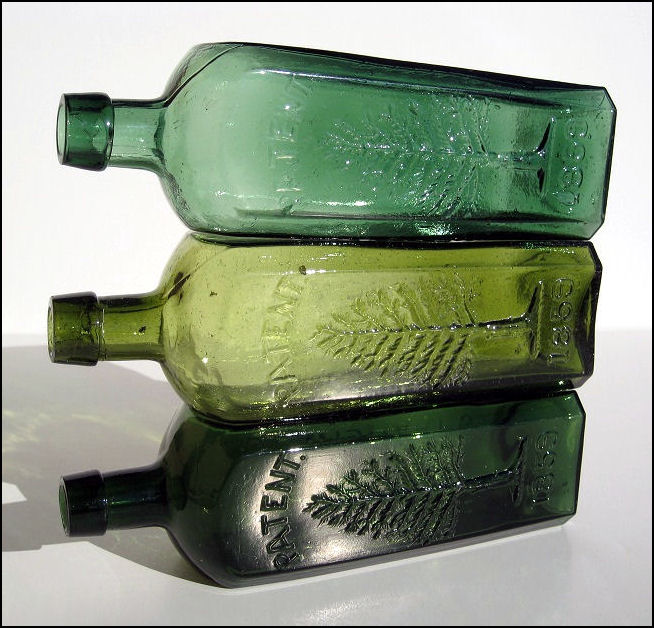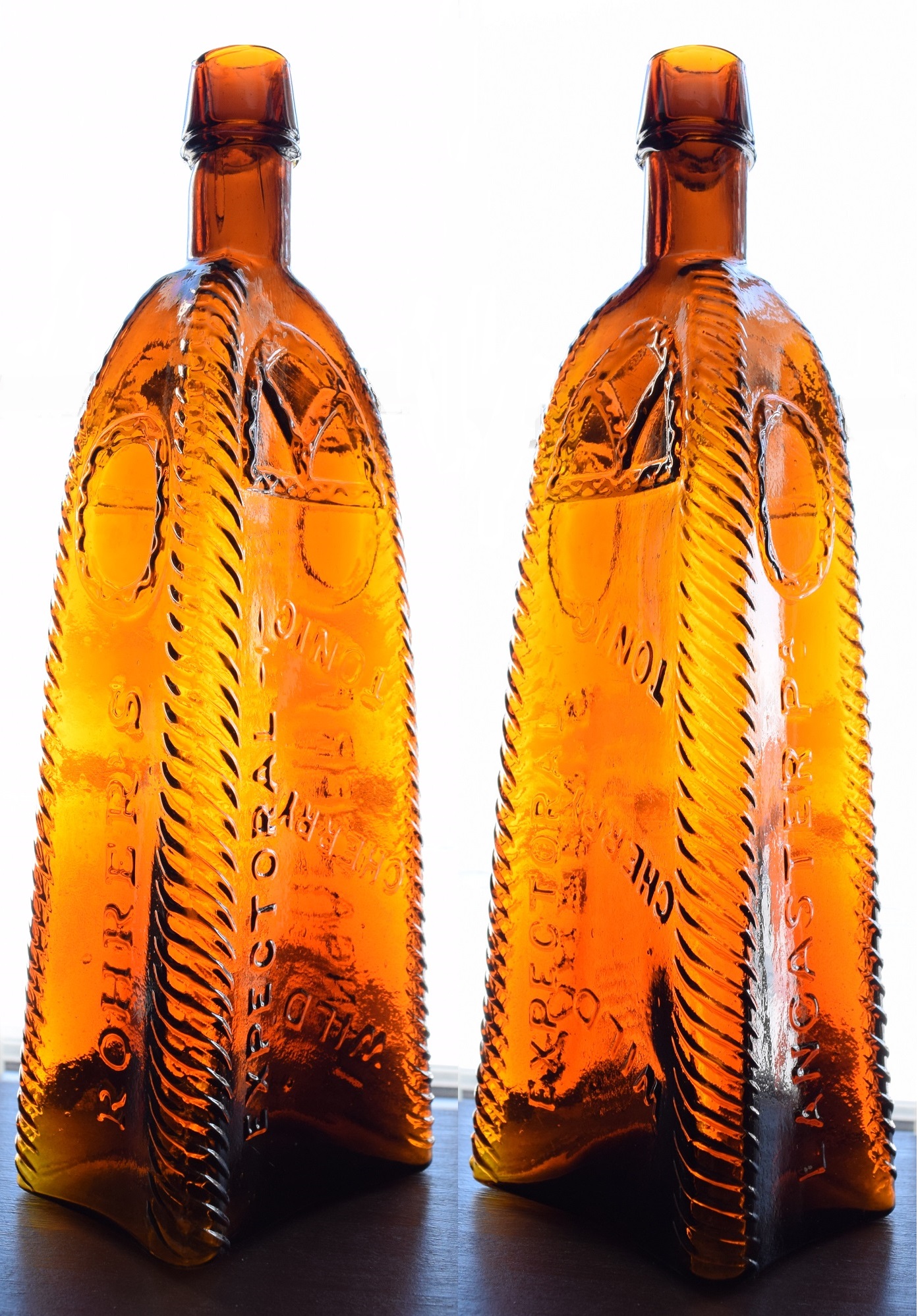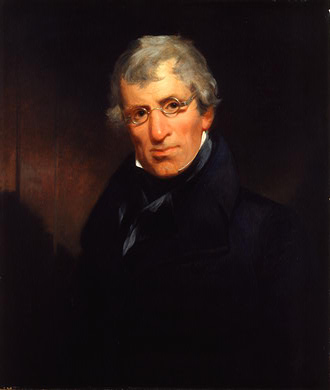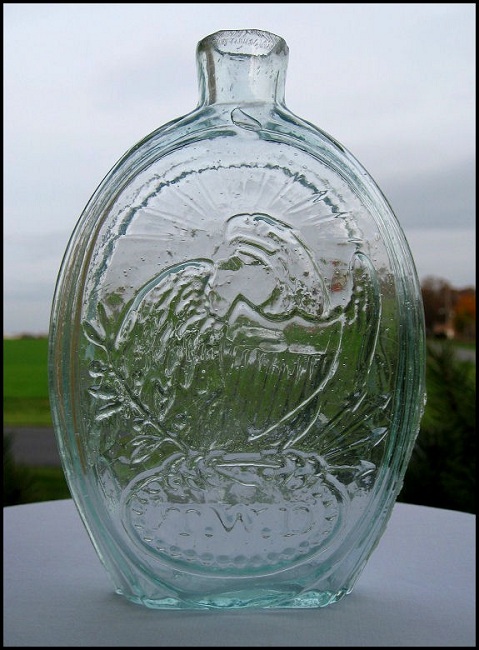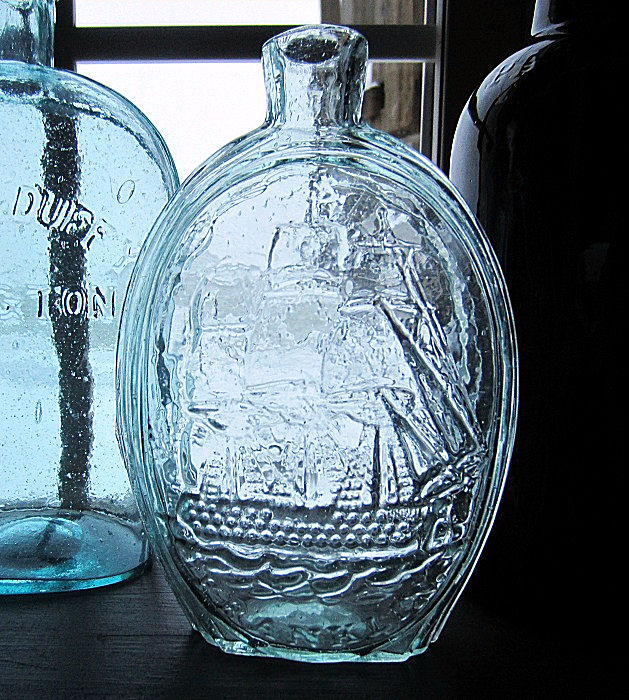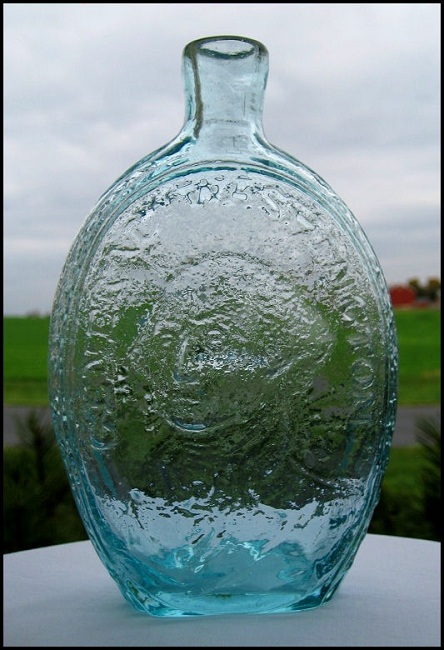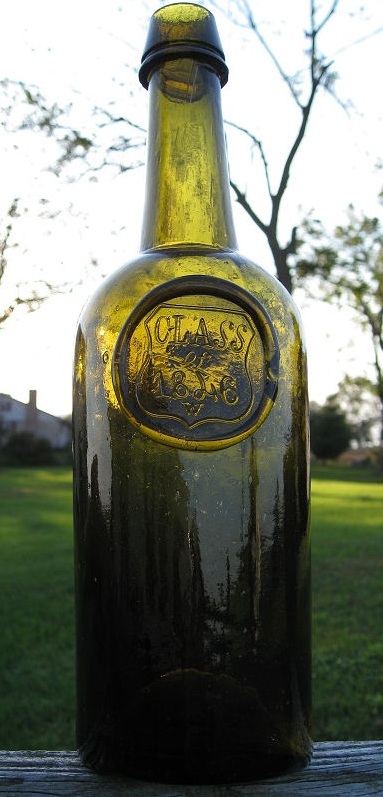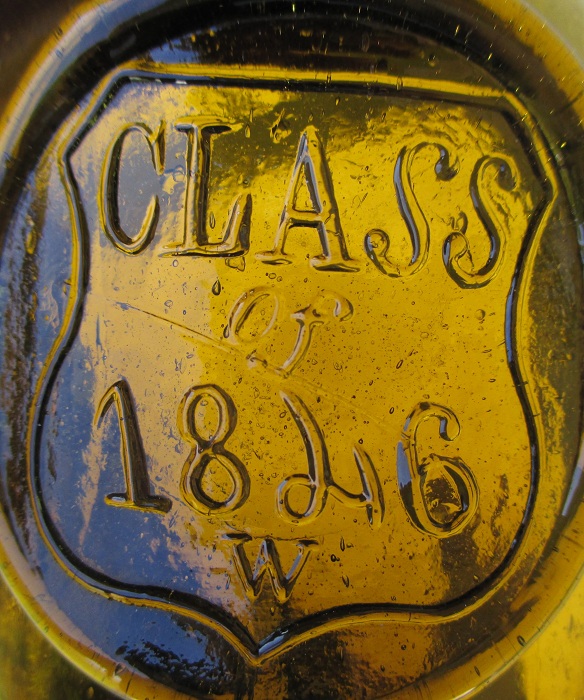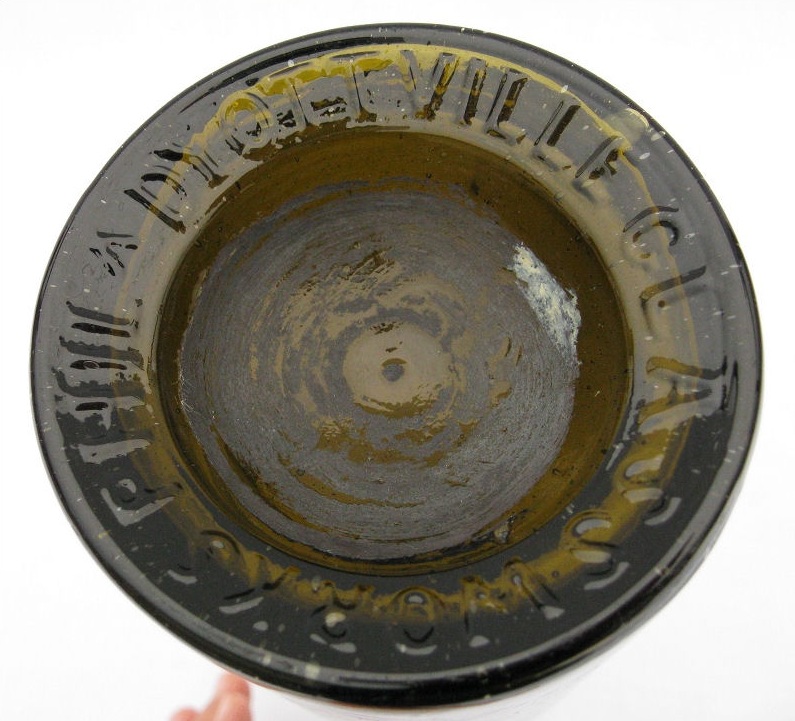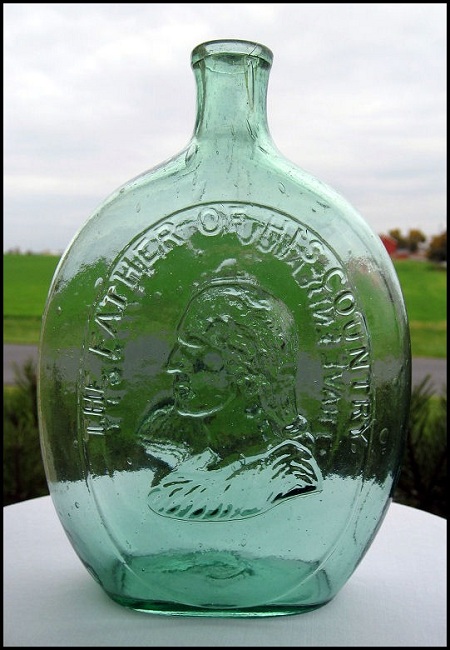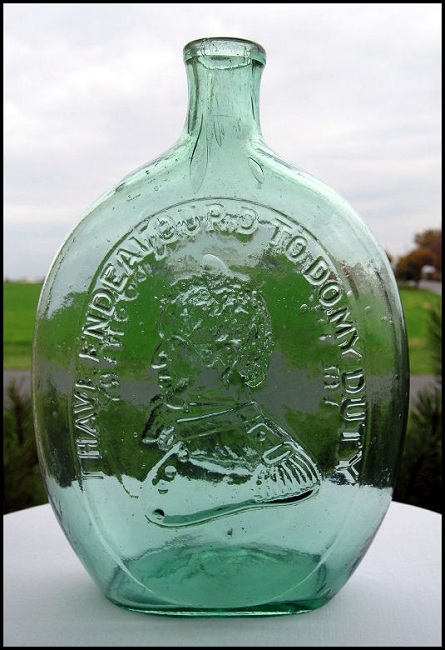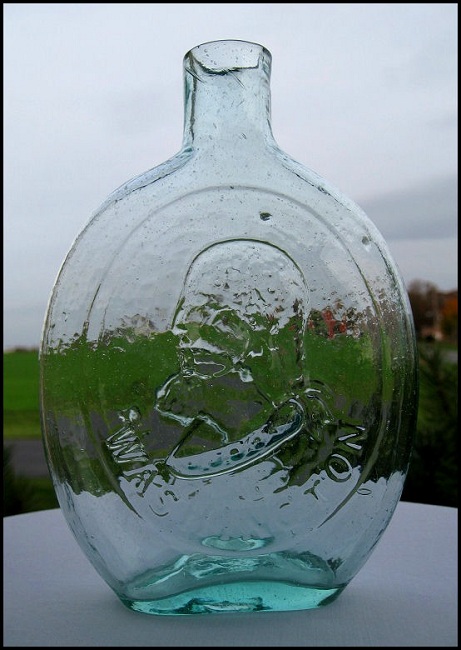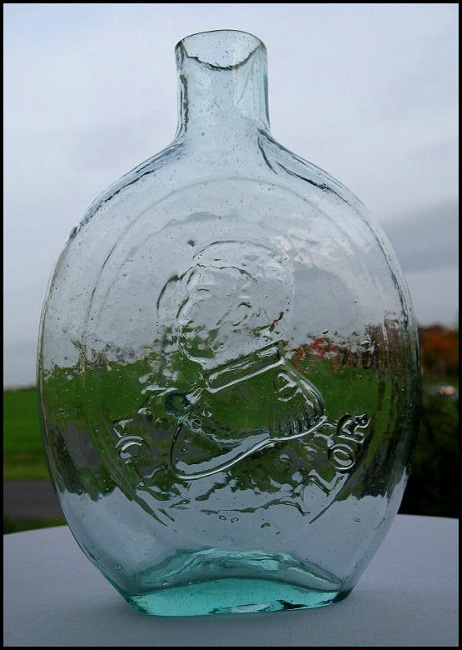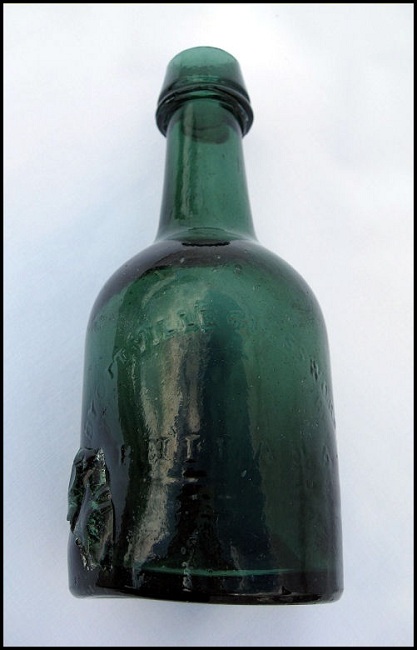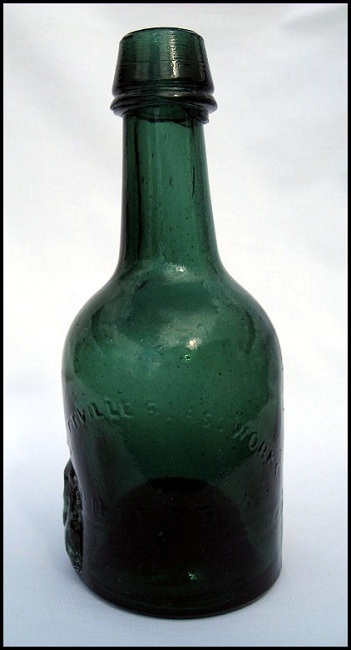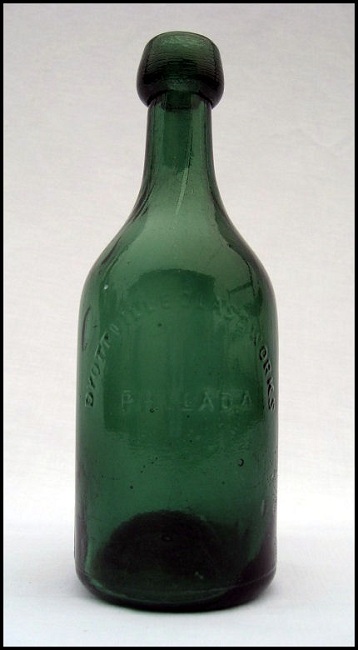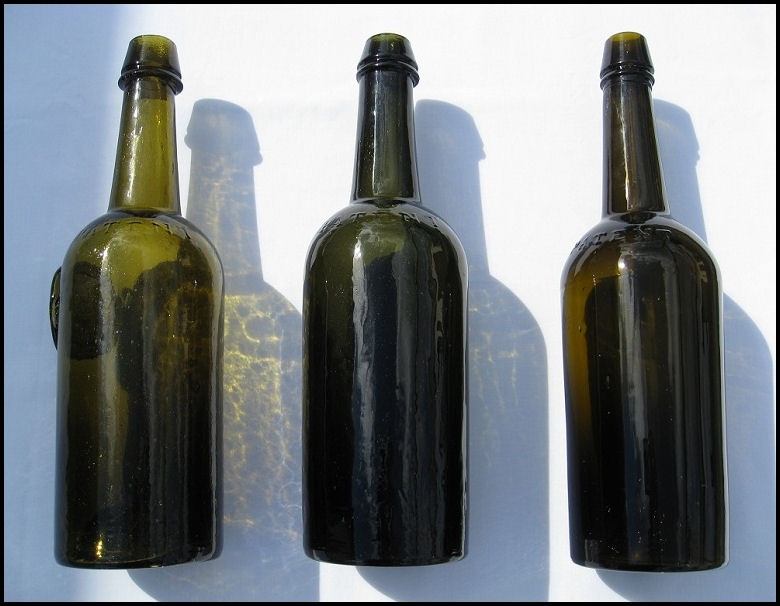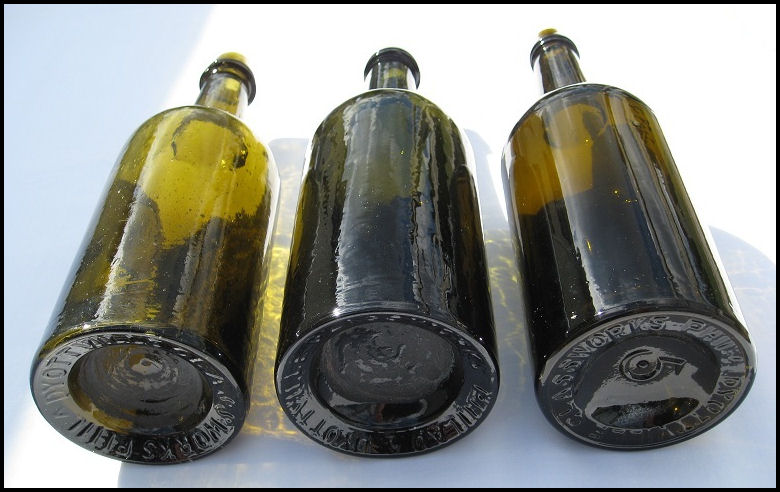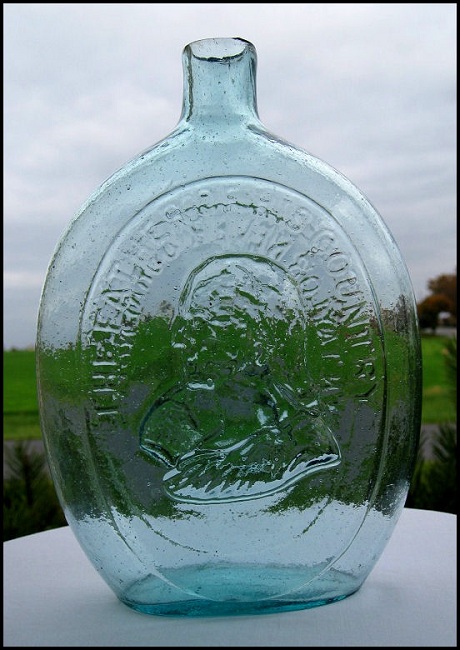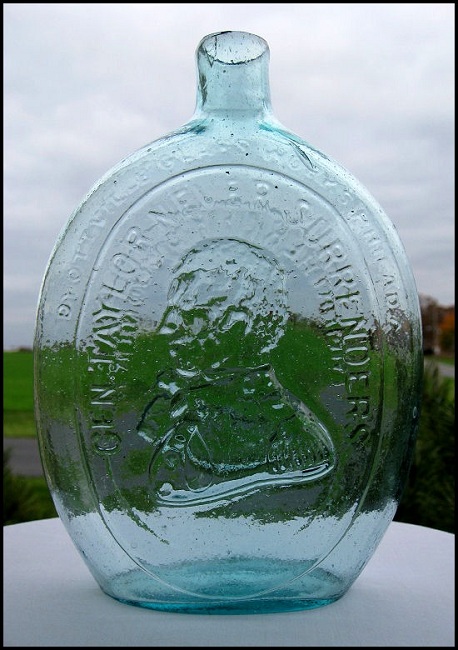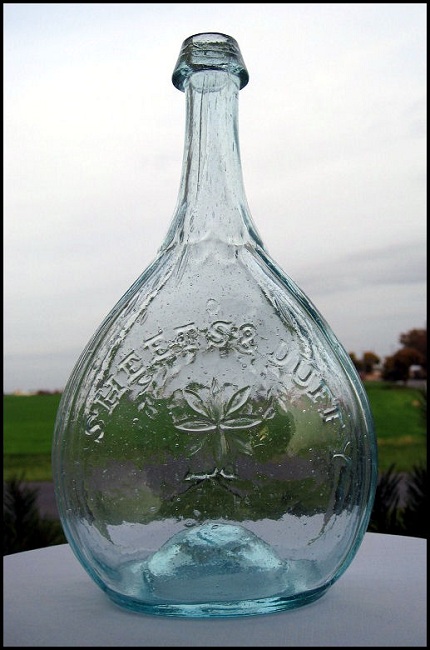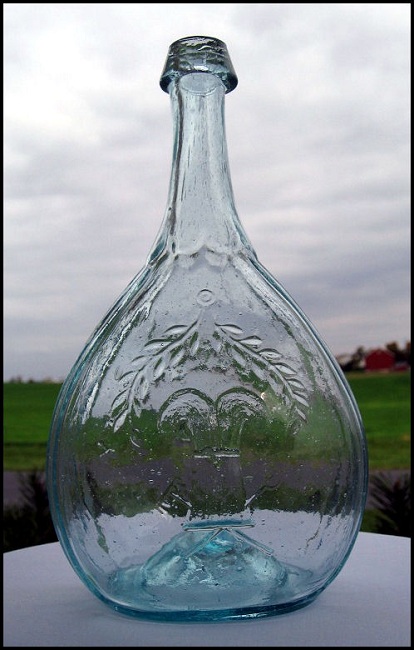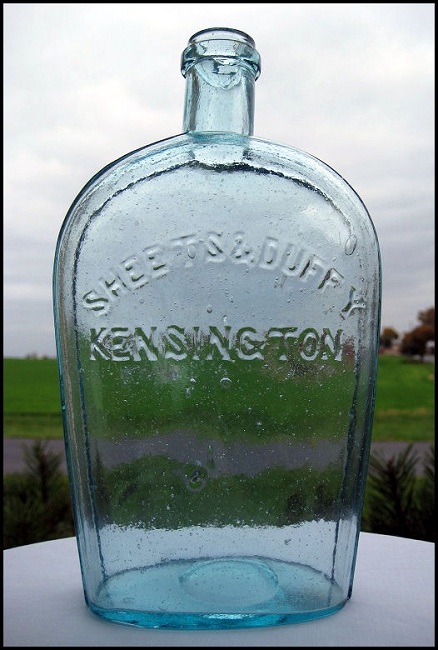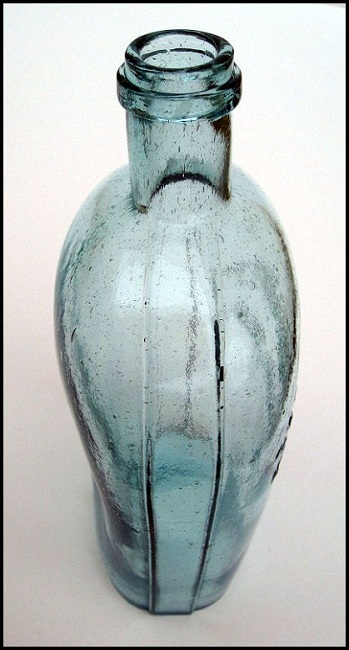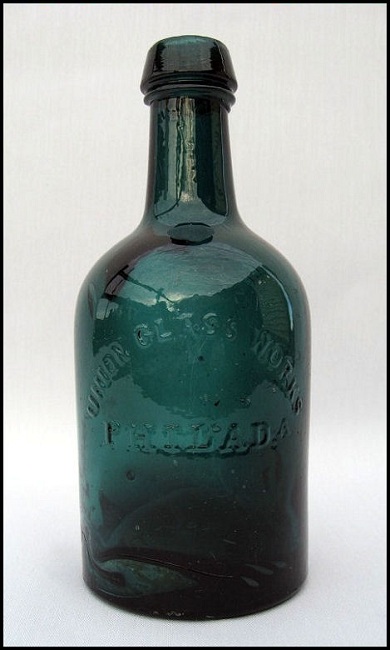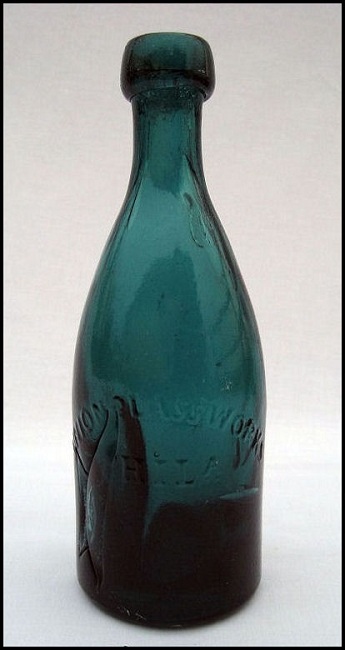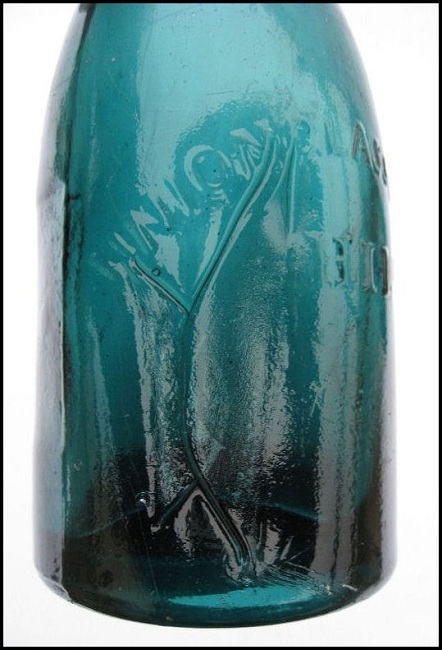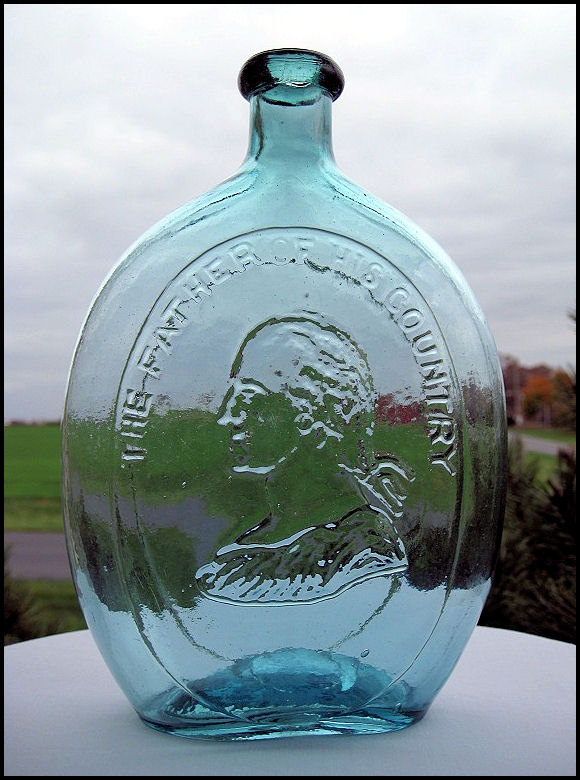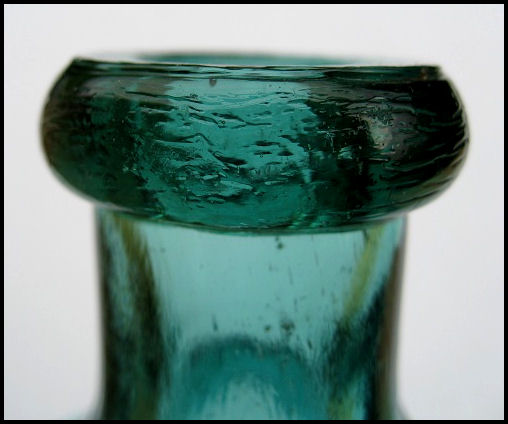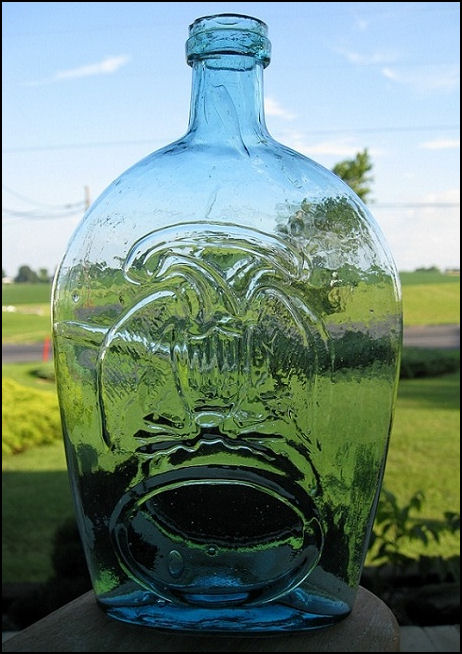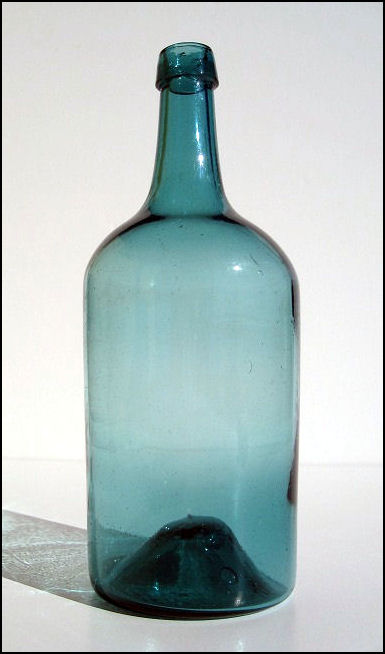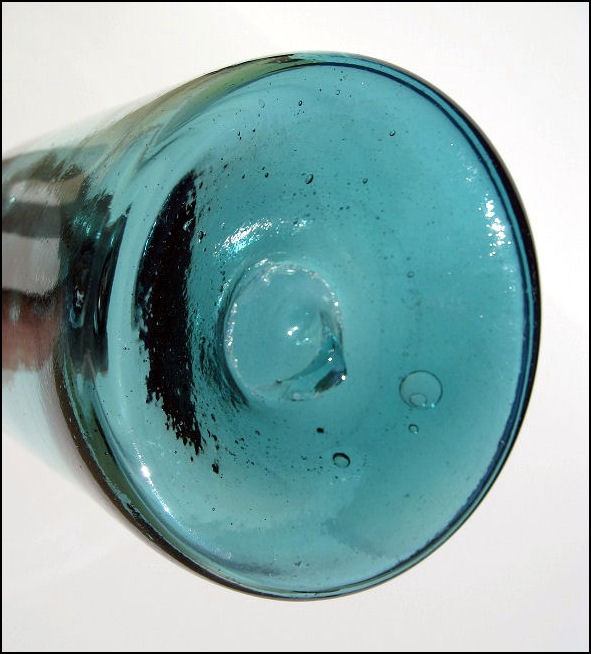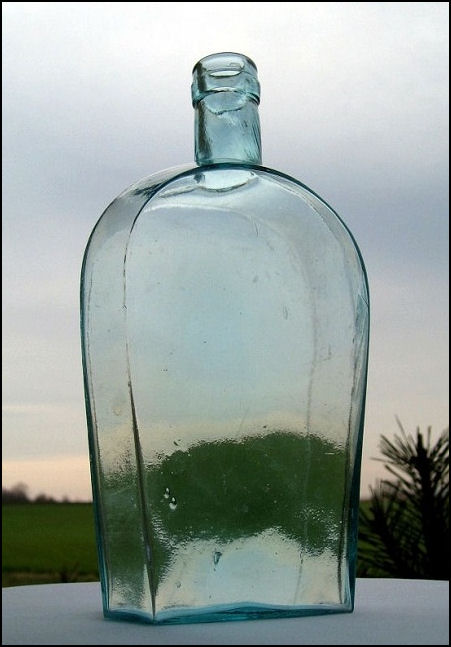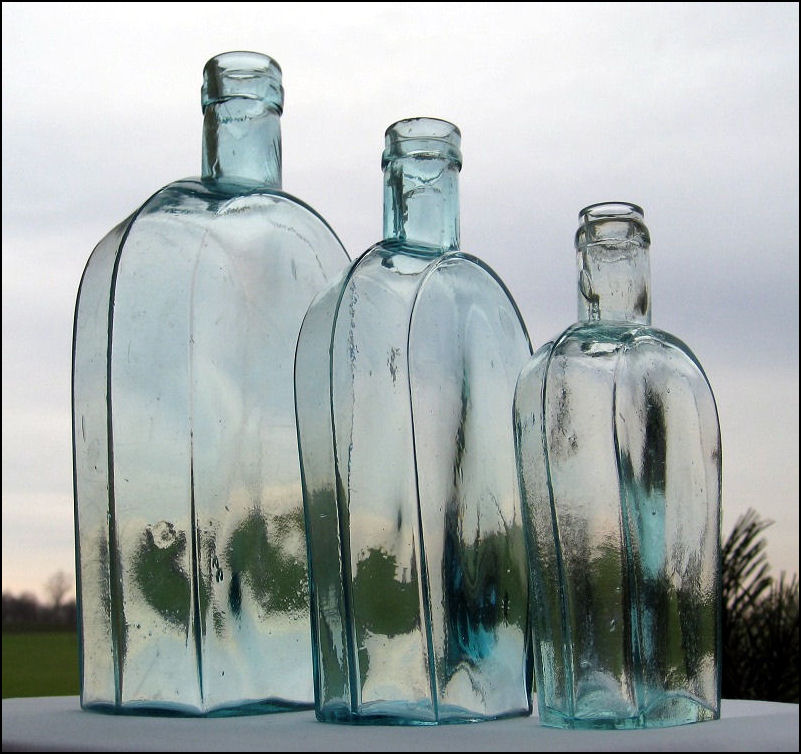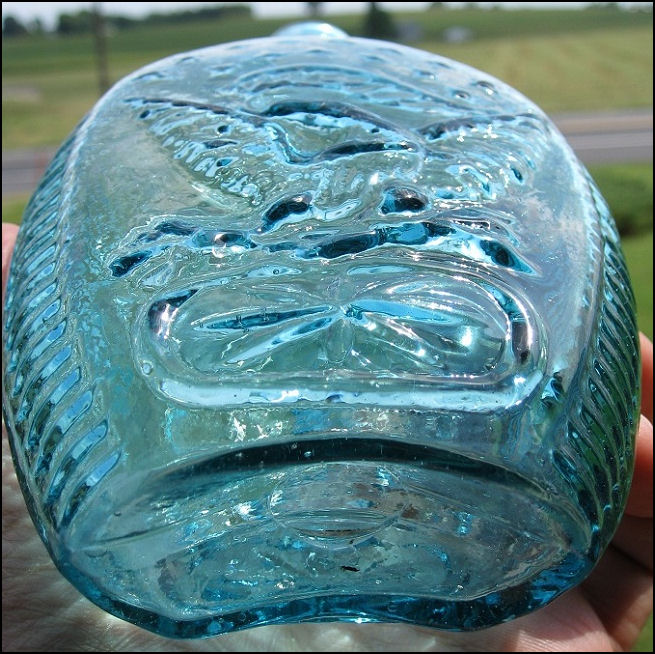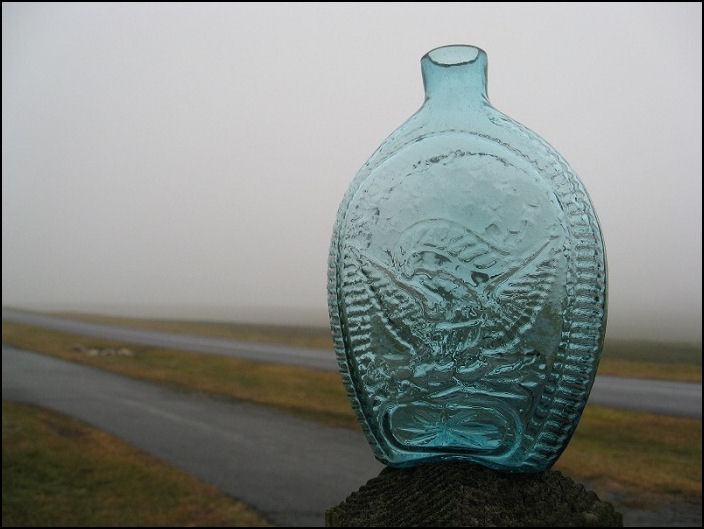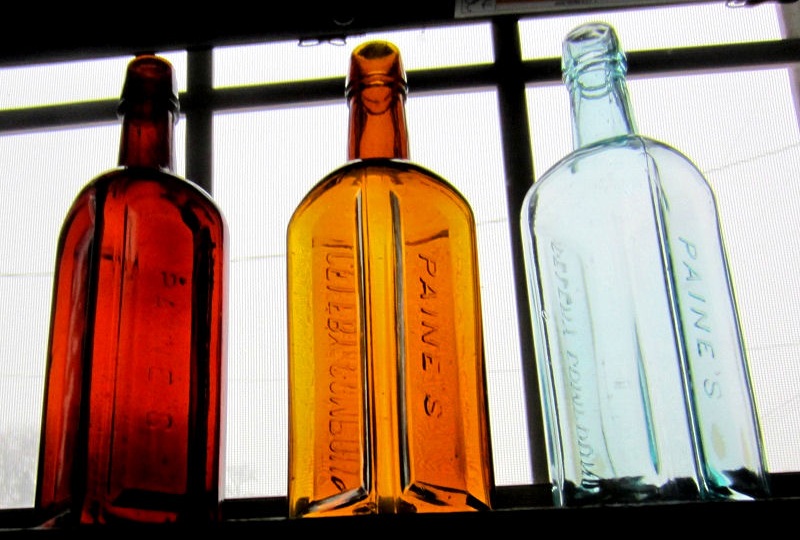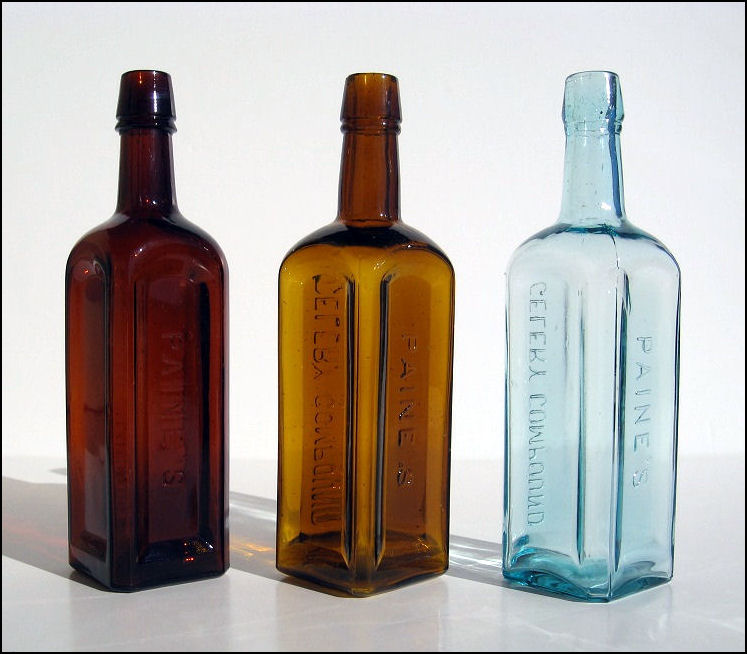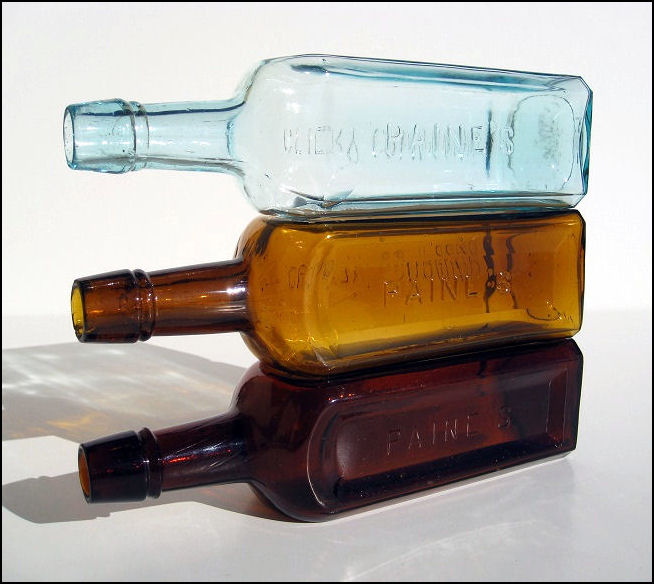The Farmhouse Collection: Bottles and Flasks
1850’s-60’s Charles Wharton Chestnut Grove Whiskey Flasks
This is an amazing pair of Charles Wharton Chestnut Grove Whiskey flasks. He sold his whiskey at 116 Walnut Street, Philadelphia, just two doors down from the famous E.G. Booz. The ‘Honey Molasses’ example on the left is from the late Thomas McCandless Collection. It’s the only one I’ve ever seen with the handle on the opposite side and in such an unusual color.
This style of flask, with or without the applied handle is referred to as a ‘Chestnut,’ due to the shape. This beautiful and primitive pair were blown at Whitney Glassworks, in Glassboro, New Jersey during the 1860’s.
Quite the pair of Chestnuts. These just grab the light and really glow.
A more recently acquired Wharton ewer, with an embossed date of 1850, and WHITNEY GLASSWORKS, GLASSBORO NJ embossed on the base which really completes the trio:
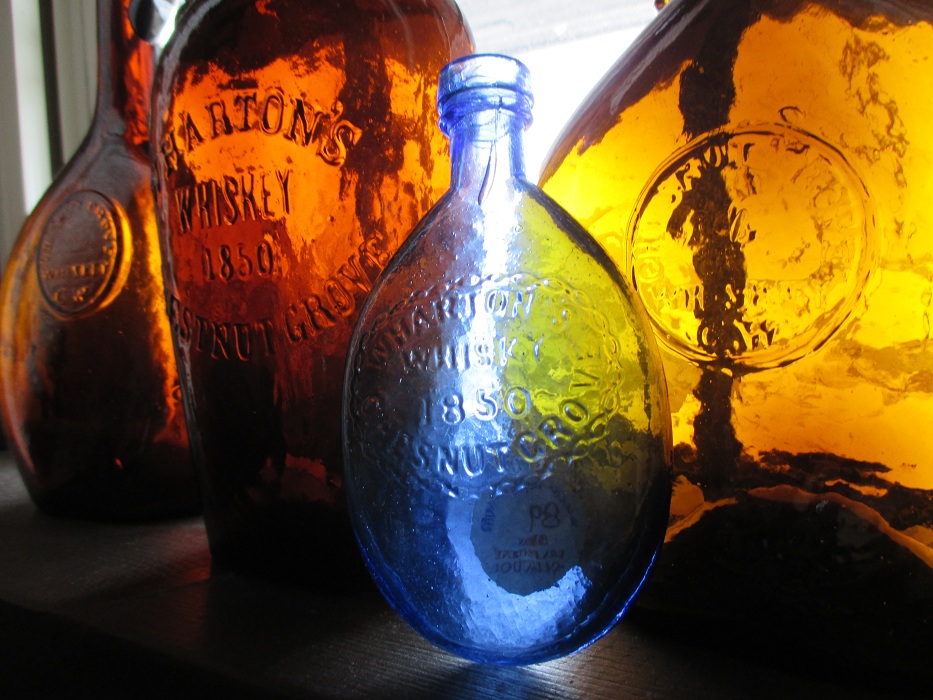 This beautiful blue pocket flask is a recent addition. A real gem and just sets them all off.
This beautiful blue pocket flask is a recent addition. A real gem and just sets them all off.
1860’s LQC Wishart’s Pine Tree Tar Cordial Bottles
These mid 19th Century bottles feature a very detailed embossed pine tree and are very pretty. There were a few versions produced, however, most are the more recent (1870-1900’s) tall and very narrow examples that feature “Trade Mark,” instead of the “Patent,” and “1859.” The large examples, (9-1/2″,) shown below are the oldest type (1859 through 1869) and are the most prized and the most difficult to acquire. The ‘Chartreuse’ example in the center is an extremely rare color and may be the only one you’ll ever see.
These are all from the same mold and share identical rivet impressions on the blank label side. These were made at Union Glass Works in Kensington, Philadelphia.
J. Rohrer’s Expectoral Wild Cherry Tonic Lancaster, Pa
This gothic, rope cornered local bottle is one of my favorites and is circa 1850-60. With an iron pontil base, this a top shelf example for sure.
Dyottville Glass Works, Kensington, Philadelphia
Bottles and flasks blown at Dyottville are my favorites. Many years ago I lived in Fishtown, Kensington on Wildey Street and was only a few minutes walk from the site of Dyottville Glass Works. Not only a hometown collector; I find that the most historical, finest quality, and best variety of bottles and flasks produced during the 19th Century, were made by Thomas W. Dyott and Dyottville Kensington Glass Works of Philadelphia.
1822-1824 Ship Franklin Eagle Flask
This very early, primitive, and beautiful pint flask (7″ high,) was unearthed in an ash pile on a dirt floor basement in an ancient, colonial house in Hatboro, Pa. It is quite rare and was only issued for 2 years. The reverse features Thomas W. Dyott’s initials. Note the arrows are on the right side and not the left, as all the eagle designs were after this example, very interesting indeed; the olive branch and arrows are always reversed after this issued flask. Note the difference on the 1826 Firecracker flask featured below this earlier Dyottville flask. The complete story of this Franklin Frigate/Eagle flask can be found in my October 2012 article: The Flask Maker, Frigate, and the Freemason Mystery.
1826-1830 Washington Eagle “Firecracker” Flask
This is a beautiful example of the most significant historical flask to be found. It commemorates the unbelievably coincidental death of John Adams and Thomas Jefferson on the same day; July 4th, 1826. That was 50 years to the day of the signing of the Declaration of Independence. A most beautiful pint size piece of history with quite a story to tell. This sparkling clean, premier example was acquired from the late Thomas McCandless at the Gold Nugget. For the whole story see my October 2012 article: The Most Amazing Historical Coincidence in American History.
Class of 1846 West Point Graduation Party Whiskey Bottle
Not only was this made at Dyottville, this is also an extremely rare and magnificent piece of military history. This cross genre collectible, possibly the most historical whiskey bottle ever, was commissioned seal stamped in 1846 for a private graduation party for George B. McClellan, second place graduate of the Class of 1846 of the United States Military Academy at West Point. Including this example, I can locate only 7 known to exist. That most famous class produced 22 Civil War Generals, and included such historic names as; George B. McClellan, Thomas “Stonewall” Jackson, and George E. Pickett, (just to name the most famous three.) The whole story thus far can be found in my October 2012 article: How Many West Point Bottles Exist? A priceless piece of history.
1847-1848 Washington Taylor Quart Flask
This light green Dyottville flask was made during General Zachary Taylor’s run for the Presidency in 1847. The front with Washington is actually the back, as Taylor was the primary focus of attention causing this flask to be produced. It’s a large quart size and is most commonly found in aquamarine.
Note the carefully inward rolled lip, which is not commonly seen on these flasks; it may be possible that a Bear’s Oil bottle glass blower may have been ordered to drop what he was doing and make a batch of these, as Dyottville Bear’s Oil bottles are this identical color green and feature the identical inward rolled lip. This is a most unusual example and is attributed to the late Charles Gardner Collection. The quote: “I HAVE ENDEAVOR,D TO DO MY DUTY,” is from a speech Taylor gave in February of 1847 in New Orleans during a dinner in his honor after coming back proud from his victory at Buena Vista in the Mexican American War. A very scarce flask in this color and lip finishing style.
1840’s-1850’s Washington G.Z. Taylor Pint Flask
This is just a gem of a flask, another Dyottville example showing the almost endless variety these Washington Taylor flasks were issued in. This very primitive example has a portrait of WASHINGTON and G. Z. TAYLOR and is likely from Taylor’s Presidential run in 1847-48, but it’s possible that the flasks were issued into the 1850’s as President Taylor died in 1850. He ate a lot of cherries and milk on the 4th of July and died on July 9th apparently of Gastroenteritis. The Mexicans couldn’t kill him, but apparently they were no match for cherries and milk. His popularity continued for years, both as President and War Hero. This flask is quite a crude example, with a whittly, pebbly, surface and unmelted stones in the glass. I was happy to acquire this from famed bitters collector and writer Richard ‘Dick’ Watson, who wrote the book Bitters Bottles in 1965.
1850’s Dyottville Green Porter Bottle With a Slight Mishap
This is a most unusual and unique example; an mid 1850’s iron pontilled ‘Dyottville Green’ ale or porter bottle. No can say for sure exactly what happened to this bottle. There is a quite noticeable indent on the side with glass imbedded into it. This fascinating example was either dropped on the way to the annealing (cooling) oven by the ‘Carrying Boy,’ or bumped against another bottle once it was being placed into the lehr (annealing oven,) or, quite possibly another bottle came apart under extreme temperature stress and pieces impacted this example. It’s quite a very old and unique conversation piece.
1850’s Dyottville Soda Bottle
This is a classic example of the utilitarian simplicity of an 1850’s bottle made for soda or mineral water. Known to collectors as a “Blob Top” and “Squat,” Dyottville produced countless numbers of these iron pontilled examples, most were issued with the commissioning business names on the opposite side by the use of a mold slug plate that was interchangeable for whatever business wanted these. Some businesses had their own private molds made and had Dyottville manufacture large numbers of their custom bottles. This example is a generic blank, having only DYOTTVILLE GLASS WORKS PHILA on what would become the back if a business name was used on it.
1846-1860’s Dyottville Whiskey Cylinder Bottles
The three whiskey bottles shown below in direct sunlight to illustrate their color, being made of darker glass, exhibit a clear example of this type of bottle as it evolved from an iron pontilled 2-part mold in the 1840’s to a non-empontilled 3-part mold bottle in the 1860’s and thereafter. They are all 11-1/4″ to 11-1/2″ tall. All are shoulder embossed with the word PATENT, which stems from the English Rickett’s Patent in 1821. The one on the left is none other than the West Point Class of 1846 bottle, featuring a golden yellow olive color. The center example is an 1840-60 olive green 2-part mold which shows a more sharper angled upward slant on the base edge embossing of DYOTTVILLE GLASS WORKS PHILADA. This may have been a change to add strength to the base. The third example on the right is the most recent, 1860’s-70’s, and is a 3-part mold, finished and top applied with a snap case or sabot tool. The base is not pontilled and the number 5 is indicative of the amount the bottle held, a 5th of a gallon. I have seen a ‘Freak’ example of this more recent version that features the base embossing completely in reverse.
1860’s Washington Taylor Never Surrenders Quart Flask
This is an attic pristine example of an 1860’s Dyottville Washington Taylor flask in aquamarine. What is interesting about this example is the lack of a pontil on the base. Right at the late 1850’s to 1860, a tool called a snap case came into use to hold the just blown bottle so the finishing touches, (usually the top application,) could be done. The snap case or sabot was a cradle type tool that was an easier method than empontilling; this method would be in use until the more modern machine method invented by Owens was used by around 1903. This still early and crude flask is similar to the green one shown previously, however this has the more common embossing of TAYLOR NEVER SURRENDERS above Taylor’s portrait and also in smaller letters over that: DYOTTVILLE GLASS WORKS PHILADA. The Washington side reads: THE FATHER OF HIS COUNTRY. These were phased out of production during the 1860’s as the Civil War ‘Union Clasped Hands’ and ‘Pike’s Peak’ flasks became the norm for that decade along with more simple ‘Double Eagle.’
1845-1869 Sheets and Duffy Glass Works, Upper North West Yard, Dyottville
The Calabash Flask
Daniel Sheets and Hugh Duffy were glass blowers for Thomas W. Dyott during the 1830’s. In 1845 they opened their own glass works in the upper north west yard of Dyottville when Benners, Smith, and Campbell had taken over Dyottville after Thomas W. Dyott’s bankruptcy, arrest, legal affairs, and having been pardoned by the Governor had him back doing business as a family druggist.
Sheets and Duffy operated from 1845 until 1869, and their bottles are not rare, but are not easily found either. What is rare is finding an example of their bottles featuring their names embossed on it. The most commonly found Sheet’s and Duffy example is a Calabash flask featuring an 8 pointed star or flower emblem on one side and a sheaf of wheat with crossed pitchfork and rake under a wreath on the other. You’ll come across 30 of these examples without their names embossed over the 8 pointed emblem before you see one with their names on it. This remains a mystery to this day.
The examples without the names has a ‘ghosting’ of where the names were, as the mold was apparently altered and the names filled in and primitivly ‘peened’ out, leaving just a faint hint that a name or words were once there. Below is shown a very rare example of a Calabash style flask (termed after the gourd,) showing the names clearly and most awkwardly embossed. Note the lack of an apostrophe in SHEETS, no spacing to the ampersand, and the Y in DUFFY clearly offset and the whole set of names is off center and should have began lower and more evenly on the left. The below Calabash is open pontilled and dates from 1845-1860.
1860’s Extremely Rare Sheet’s & Duffy Quart Strap Flask
This is an extremely rare example and might be the only one you’ll ever see outside of a drawing illustration in a McKearin Historical Glass book. (GXV-22 classification.) This is a very unusual strap flask for a couple of reasons.
One, as mentioned above, is similar to the issues with the Calabash, as the embossing of the names exhibits the same problems and the word KENSINGTON is offset awkwardly to the left. The SHEET’S & DUFFY embossing is almost identical to the embossing featured on the calabash example. I have seen a smaller pint version of this flask and the issues with the embossed names are identical. What is also interesting is the overall shape of this quart strapside flask, which by those times was made by many a mold maker to literal perfection. This example, however, has some clear issues.
Note the first picture showing the offset and weird embossing, and note the second picture showing the overall strangeness to the flask’s shape. This is a shorter, fatter, and most unusual type of strap flask with the upper half on the reverse literally ‘blowing out’ at the upper half. It came from a very unique mold indeed, or, the initial blow was weak and the bottom back of the bottle didn’t quite reach the mold back surface.
1840’s Union Glass Works, Kensington, Philadelphia, Porter Bottle
This is an early classic and a beauty; the simple functional style, with the primitive making, featuring an iron pontil and an applied top makes this one quite collectible alone. But, this one has a very unusual base which has a large area of unmelted ‘slag,’ or stone and sand material which created gloppy wrinkles in the glass and makes this example unique in itself. The beautiful sea green teal color itself makes it worthy of any collection.
This is a very early generic example, as there isn’t even a slug plate on the reverse for a business name. This is simply an early 1840’s beautiful example. Being a long time diver, this bottle represents (in the second picture) exactly what I would see dropping down, the color, the bubbles, and note the slag area closely, it looks exactly like the sand and rocks of the ocean floor. Most divers find bottles at the bottom of the ocean, I found the bottom of the ocean in this bottle.
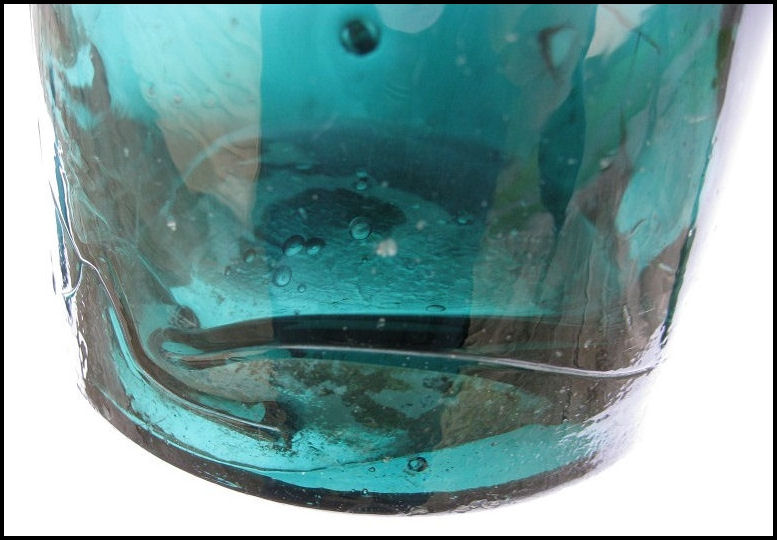
1850’s Union Glass Works ” Double Mold Pinched” Soda Bottle
This is an amazing and one of a kind example of an 1850’s iron pontiled teal/peacock colored soda water bottle. This was pinched in the mold seam as it was being blown. The Blower realized it and likely had his ‘Mold Boy’ or asssistant open the mold and turn the partially formed bottle so the pinch folded over. If you’re lucky, you can find an example with such an occurence. This example, however, had the problem again, and the mold had to be opened again and the bottle turned back to create what you see below, a “Double Pinched” fold. I don’t think I’ll ever see another example like this. A stunning and one of a kind bottle. Not even to mention in this amazing color.
1840’s Lockport NY Washington Portrait Quart Flask
This is an absolute beauty from the 1840’s with the “THE FATHER OF HIS COUNTRY” embossed with portait of an elder, more statesman-like George Washington on the front, with nothing on the back. This is actually a nice feature, as instead of anything missing, it has no image behind the front portrait to distract. This has a rather interesting top that is much darker than the rest of the glass comprising the flask. The top is a hand applied “Donut,” that consists of the same batch color used to make the bottle. The flask is a medium teal color. An awesome beauty from Lockport Glass Works.
1860-70 Pittsburgh Double Eagle Quart Flask
This is a beauty of an example of what was a very popular flask produced by many glasshouses in the 1860’s -70’s. This one, by the color alone, I would easily attribute to Pittsburgh. This photograph taken in the heat of summer reminds me of glacial ice on a hot summer day that will never melt. A gem of a flask; this was a birthday gift from my father.
1840’s Pittsburgh Small Freeblown Demijohn
This is a 10-1/2″ high x 3-7/8″ brilliant turquoise teal small demijohn. The color is no doubt classic Pittsburgh. The open tubular pontil is sharp enough to bite and the upkick is awesome. It’s possible this may have been used as a Tavern Porter, but those usually had a rolled lip and not the applied sloped collar this one exhibits. Nonetheless, I’ll never see another small demijohn from Pittsburgh quite like this one.
Pittsburgh 1860-70’s Coffin Flasks All Sizes
These are quite beautiful and primitive as they are the first variant of this type of flask. The angled to sharp edge contrasts nicely with the applied round string lip finish. Shown below are a quart, a pint, and the smallest, a 1/2 pint. For more information on these and how I acquired them, see my November 2012 article: A Bridging Occurrence at Owl Creek Bottle. Pictured below are the largest quart size example, and below that all three sizes.
1830-40 Medium Teal Louisville Kentucky Glassworks Double Eagle
This is the absolute nicest example of this very early midwestern much sought after flask one could hope for. Usually found in aqua, this one is well past that and reaches a nice medium teal color. In direct sun or fog, it’s an artsy beauty in an amazing color.
1880-90 Paine’s Celery Compound in a Rare Color Run
This is a common bottle in the dark amber, but getting one’s hands on a Topaz and an Aqua brings this common bottle to another level. The colors are rich and contrasting. The Aqua example may have been a Canadian issue only.
Much more to come; Stay Tuned….
There’s so much still laying about to be added, time is the crucial factor due to lighting and weather conditions for photography.



